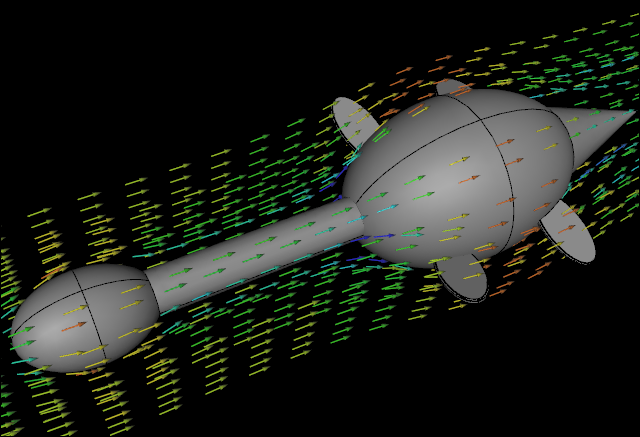
Long-Necked Dinosaurs Succumb To CFD
It turns out that Computational Fluid Dynamics (CFD) has a key role to play in determining the behavior of long extinct creatures. In a previous, post we described a CFD study of parvancorina, and now Pernille Troelsen at Liverpool John Moore University is using CFD for insights into how long-necked plesiosaurs might have swum and hunted.
 CFD Water Flow Simulation over an Idealized Plesiosaur: Streamline VectorsIllustration only, not part of the study
CFD Water Flow Simulation over an Idealized Plesiosaur: Streamline VectorsIllustration only, not part of the study
Troelsen created an idealized CFD model of a plesiosaur to investigate the effects of neck positions on drag as the creature swam.
 CFD Water Flow Simulation over an Idealized Plesiosaur: Streamline TubesIllustration only, not part of the study
CFD Water Flow Simulation over an Idealized Plesiosaur: Streamline TubesIllustration only, not part of the study
Various ideas as to why the plesiosaur had such an extremely long neck (up to 7 meters in fossilized remains) have been proposed, but Troelsen's CFD study sheds light on how the creature might have managed to move around within its natural environment.
 CFD Water Flow Simulation over an Idealized Plesiosaur: Surface VectorsIllustration only, not part of the study
CFD Water Flow Simulation over an Idealized Plesiosaur: Surface VectorsIllustration only, not part of the study
Future work looks to improve the CFD model fidelity using digitized fossil remains of actual plesiosaurs.
Recent blog posts
- CFD Simulates Distant Past
- Background on the Caedium v6.0 Release
- Long-Necked Dinosaurs Succumb To CFD
- CFD Provides Insight Into Mystery Fossils
- Wind Turbine Design According to Insects
- Runners Discover Drafting
- Wind Tunnel and CFD Reveal Best Cycling Tuck
- Active Aerodynamics on the Lamborghini Huracán Performante
- Fluidic Logic
- Stonehenge Vortex Revealed as April Fools' Day Distortion Field
